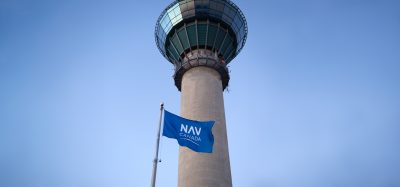Playing it cool in Munich
- Like
- Digg
- Del
- Tumblr
- VKontakte
- Buffer
- Love This
- Odnoklassniki
- Meneame
- Blogger
- Amazon
- Yahoo Mail
- Gmail
- AOL
- Newsvine
- HackerNews
- Evernote
- MySpace
- Mail.ru
- Viadeo
- Line
- Comments
- Yummly
- SMS
- Viber
- Telegram
- Subscribe
- Skype
- Facebook Messenger
- Kakao
- LiveJournal
- Yammer
- Edgar
- Fintel
- Mix
- Instapaper
- Copy Link
Posted: 2 October 2012 | Alfons Breiteneicher, Head of Surface and Winter Services at Munich Airport | No comments yet
The process of winter operations remains an important part of an airport’s armoury. Since 2010, when arctic conditions covered the majority of Europe and North America’s airports in a blanket of ice and snow, many have come underpressure to clear runways, taxiways and aprons as swiftly as possible to maintain normal flight movements.
Planning and preparation are two of the key factors involved with successful winter operations, as well as a strong execution of clearing procedures. Munich, the sixth busiest airport in Europe, relies heavily on keeping planes airborne, so implementing a sound winter operations plan is essential.
Mark Glover from International Airport Review spoke to Alfons Breiteneicher, Head of Surface and Winter Services at Munich Airport, about the types of equipment the airport uses, the environmental affect, and the importance of keeping the airport open, no matter what the weather.
The process of winter operations remains an important part of an airport’s armoury. Since 2010, when arctic conditions covered the majority of Europe and North America’s airports in a blanket of ice and snow, many have come underpressure to clear runways, taxiways and aprons as swiftly as possible to maintain normal flight movements.
Planning and preparation are two of the key factors involved with successful winter operations, as well as a strong execution of clearing procedures. Munich, the sixth busiest airport in Europe, relies heavily on keeping planes airborne, so implementing a sound winter operations plan is essential.
Mark Glover from International Airport Review spoke to Alfons Breiteneicher, Head of Surface and Winter Services at Munich Airport, about the types of equipment the airport uses, the environmental affect, and the importance of keeping the airport open, no matter what the weather.
Mark Glover: At what point in the year will your winter preparations take place?
Alfons Breiteneicher: Our general approach here at Munich Airport is as soon as the current season has finished then we immediately start thinking about the next one. Throughout the wintery months we are constantly monitoring and absorbing information that can be used for next time. It is almost a form of evolution, taking on lessons from the previous season into the next one.
We, of course, have a large amount of preparation and planning that goes into each new season. A big part of this preparation is the organisation and training of staff – both old and new. In addition to our current pool of winter operations staff, we hire an extra 38 temporary employees who will work with us for six months of the winter programme. We also have to make sure that these extra employees are trained to the standards that are expected of the airport. We will also draw up a rather large but comprehensive staff rota that covers all hours and disciplines of our operations.
When preparing for the upcoming winter season we have to take into account any construction changes that might have taken place within the area such as new buildings, as this will have an effect on our clearing and spreading patterns and movements.
Our tender for de-icing fluid is also made early to ensure it is received on time and in sufficient amount. Furthermore, and very importantly, there may be a new array of policies and regulations that we need to be aware of and adapt our plans to; this will involve checking all of our technical facilities.
MG: What types of equipment do you use for the winter season?
AB: For the process of clearing the runways and taxiways we have a fleet of 35 vehicles. This includes; 24 airblower sweepers, six trucks, two airports sprayers, two multi-de-icers and one spreader for the granulate formula. For the aprons and other areas we have an array of tractors as well as snowploughs, sweepers and sprayers.
We also have four multi-de-icers to cover this area. We also incorporate vehicles for the transport and re-location of snow. This includes snow loaders, trucks for snow movement, two snowcats as well as three cars for the transportation of the Heads of Operations to oversee the progress. Overall, we have a total of 153 winter service vehicles.
MG: What is the overall plan when faced with a snow-stricken airfield?
AB: Our initial and main priority is to physically remove as much snow from the airfield as possible. To do this, we undergo a procedure that involves both snow sweeping and snow blowing using the vehicles I previously mentioned. When this process finishes we begin to de-ice the area using a number of different techniques, again using the specific vehicles and our highly trained personnel.
We will have already made a clear plan of how much de-icing fluid we intend to use on the affected areas. Due to environmental regulations, we are restricted to using 30 grams per square metre on the runway area and 20 grams per square metre on the taxiway area. It is very important to control this consumption and it is something we are consistently aware of.
Of course, the environment is an extremely important factor, particularly when using the de-icing fluids. We work very closely with the water authority which provides guidelines and policy for us to follow. Ultimately, we are allowed to use 2,500 tonnes of de-icing solution per winter season and no more. This is very important and we pride ourselves on working within these boundaries.
MG: What do you feel are the biggest challenges of a winter season at Munich Airport?
AB: Very simply, the physical process of removing the snow is one, if not the, biggest challenge of the season. The amount of snow that can fall on such a large area in such a small amount of time can be quite astonishing. Logistically, removing that build-up is the biggest challenge that we find during the season.
At the airport, specifically on the airfield, we have an area of approximately four million square meters. So to put that into context if we have 1cm of snowfall, which is 0.4 inches, then there is approximately 40,000 square cubic metres of snow to clear. This snow needs to be cleared and then pushed to one side to create ‘snow dams’. These ‘dams’ can be rather big. This, I feel, is the biggest challenge that we face.
Munich Airport is an extremely busy hub which consolidates a large amount of flight movements. It is essential that we aim to maintain flight operations with few interruptions. Ultimately, we have to keep the runway open, so we have a timeframe of 25 minutes in which to clear this area.
The airport has never been closed, we had to close a runway once, but never the entire airport.
MG: Finally, how closely do you work with the other departments within the airport during the winter season?
AB: We all work together extremely closely. Our winter operations programme has a very good reputation. It is important that we work closely with the water authority, ATC, security services and the fire departments, all of which helps us perform to the best results.
About the author
Alfons Breiteneicher has been working at Munich Airport since 1988 where he began in the Technical Department. In 1995 he became the Quality Management Auditor. In 2005 he became the Head of Surface and Winter Services at the airport, a position which he holds to this day. In this same year, Alfons graduated with a Business Management and Trade qualification.
















